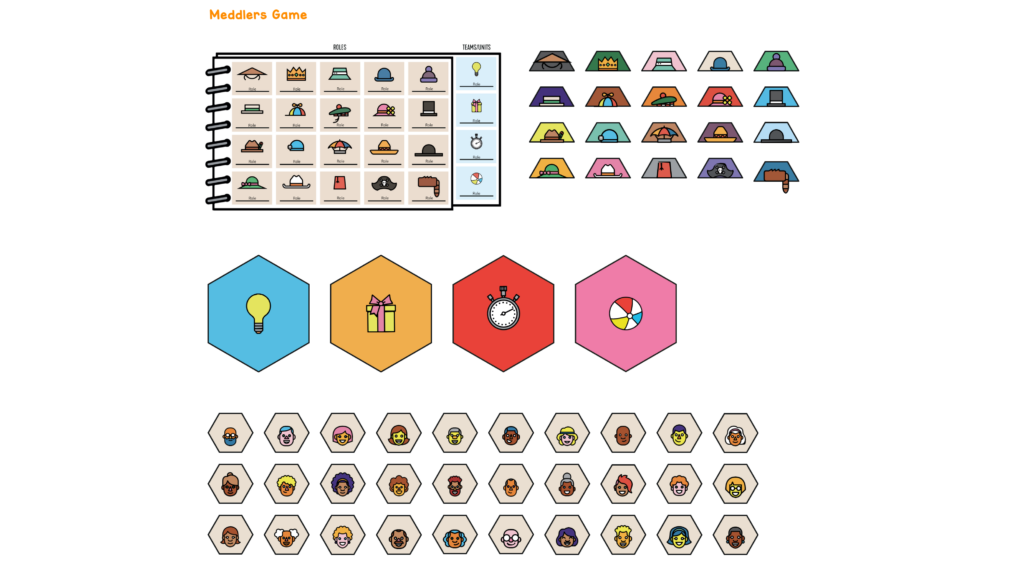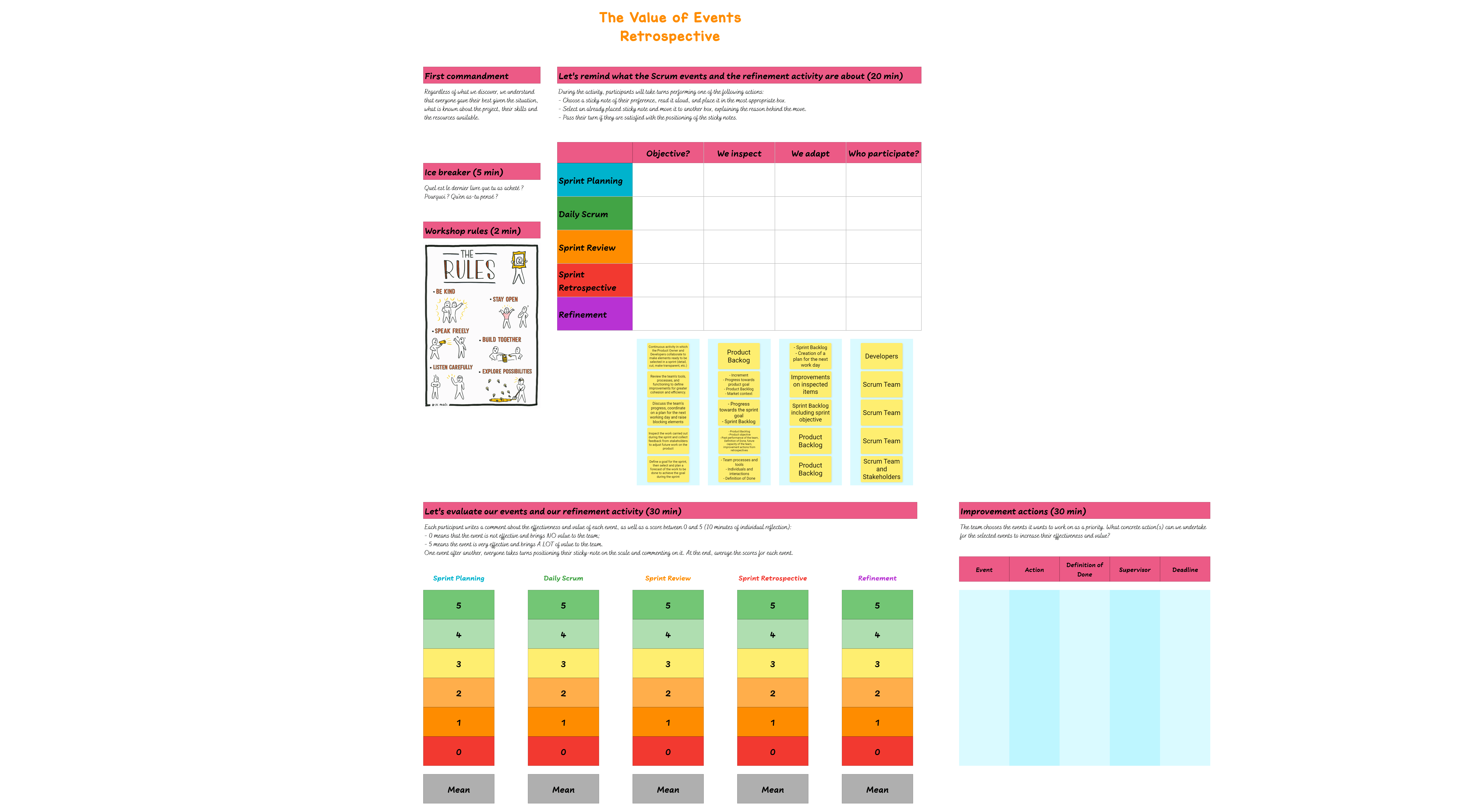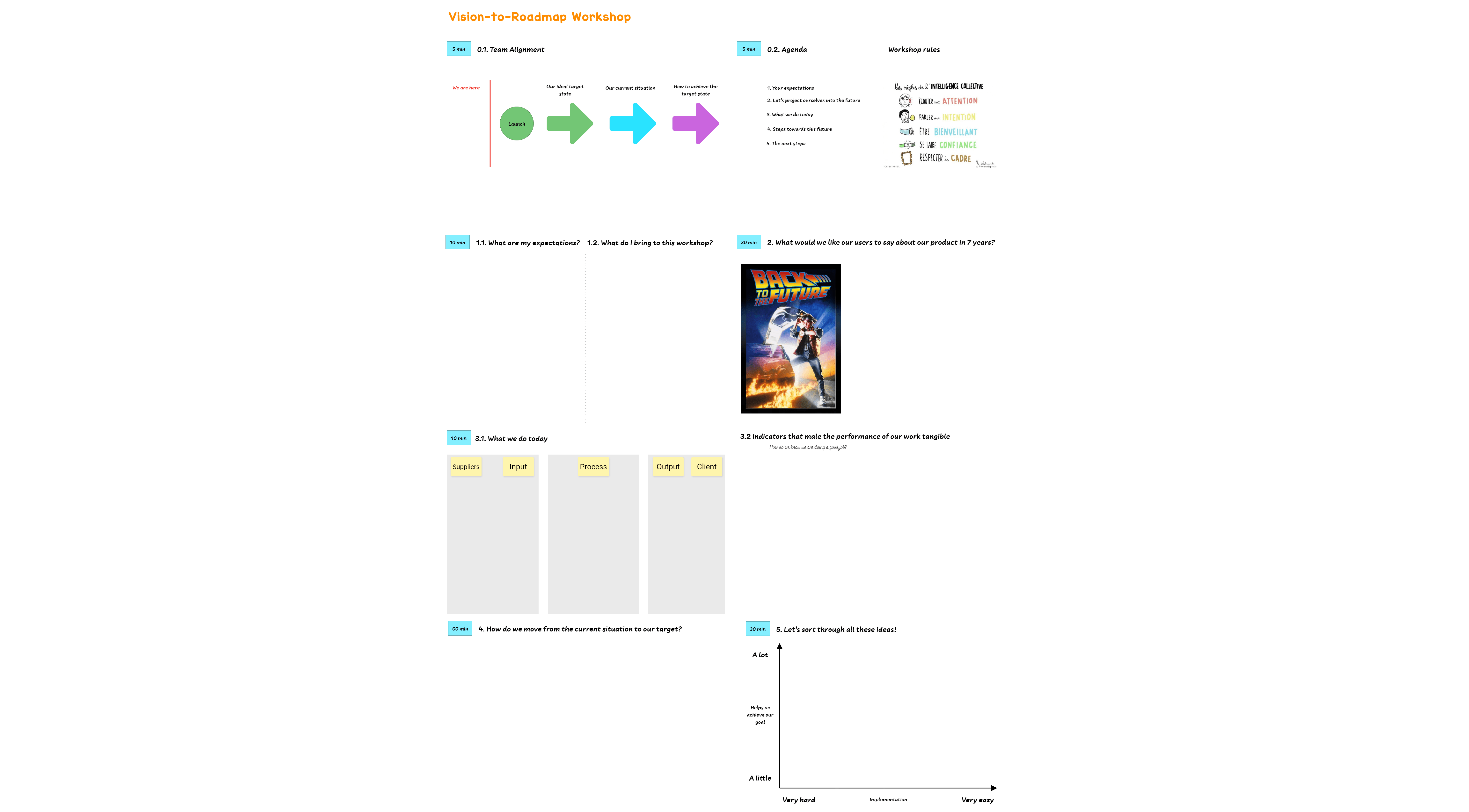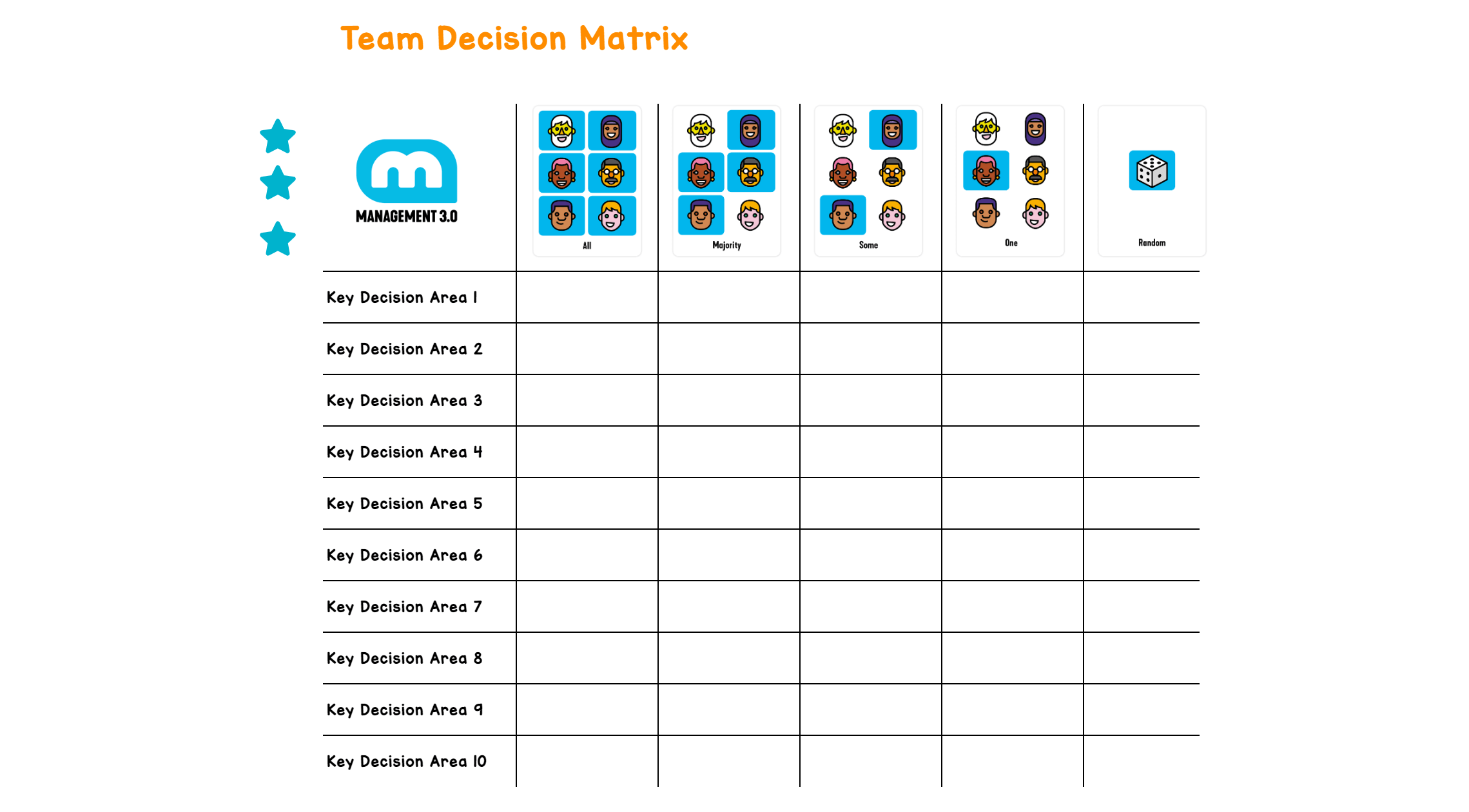Description of the workshop
The Meddlers Game workshop is a serious game that aims to help visualize and stimulate discussion around organizational issues. It can be particularly relevant in a context where several teams are involved in several projects.
The Meddlers Game comes from Management 3.0, a management approach considering an organization a complex adaptive system. This approach brings together a body of practices that aim to promote the empowerment and autonomy of teams, encourage experimentation and continuous learning, and establish communication and collaboration networks within organizations.
The workshop is similar to a board game, made up of 3 types of pieces:
- 4 large hexagonal tiles which represent teams, poles, services, etc. ;
- 30 characters who can be associated with collaborators;
- 20 hats that symbolize the roles that employees can have.
This workshop is highly recommended for those seeking to improve their organization as part of a digital transformation or a large-scale agility program. It will assist you in ensuring that each team is coherent and identifying the areas where collaboration and support are required among different teams. By participating in this exercise, you will be able to pinpoint the specific needs of each team and work towards enhancing their productivity and efficiency.
How to play the Meddlers Game
The game generally takes place in 4 stages:
Step 1: Preparing the workshop
The facilitator presents the game's objective and its rules and delimits the scope of the activity, specifying the roles, tasks, and responsibilities.
Step 2: Exploration
Participants are asked to arrange and rearrange the cards to represent various models of organizational structure. They can explore different configurations, discuss the effectiveness of each, and debate their advantages and disadvantages.
Step 3: Discussion and reflection
After experimenting with different models, participants reflect and discuss the results. They evaluate their proposed organizational structures regarding efficiency, flexibility, and creativity.
Step 4: Conclusion
Participants should eventually provide feedback on lessons learned and suggest actions, such as restructuring or communication improvements.







